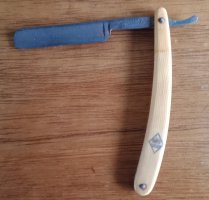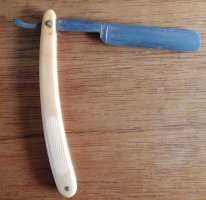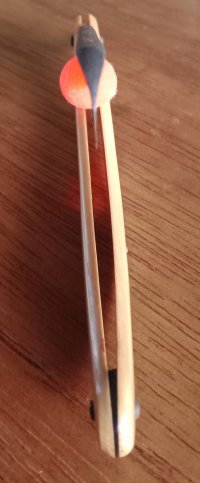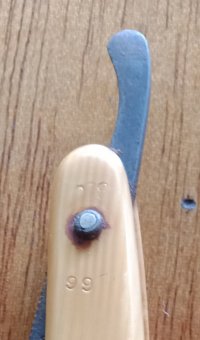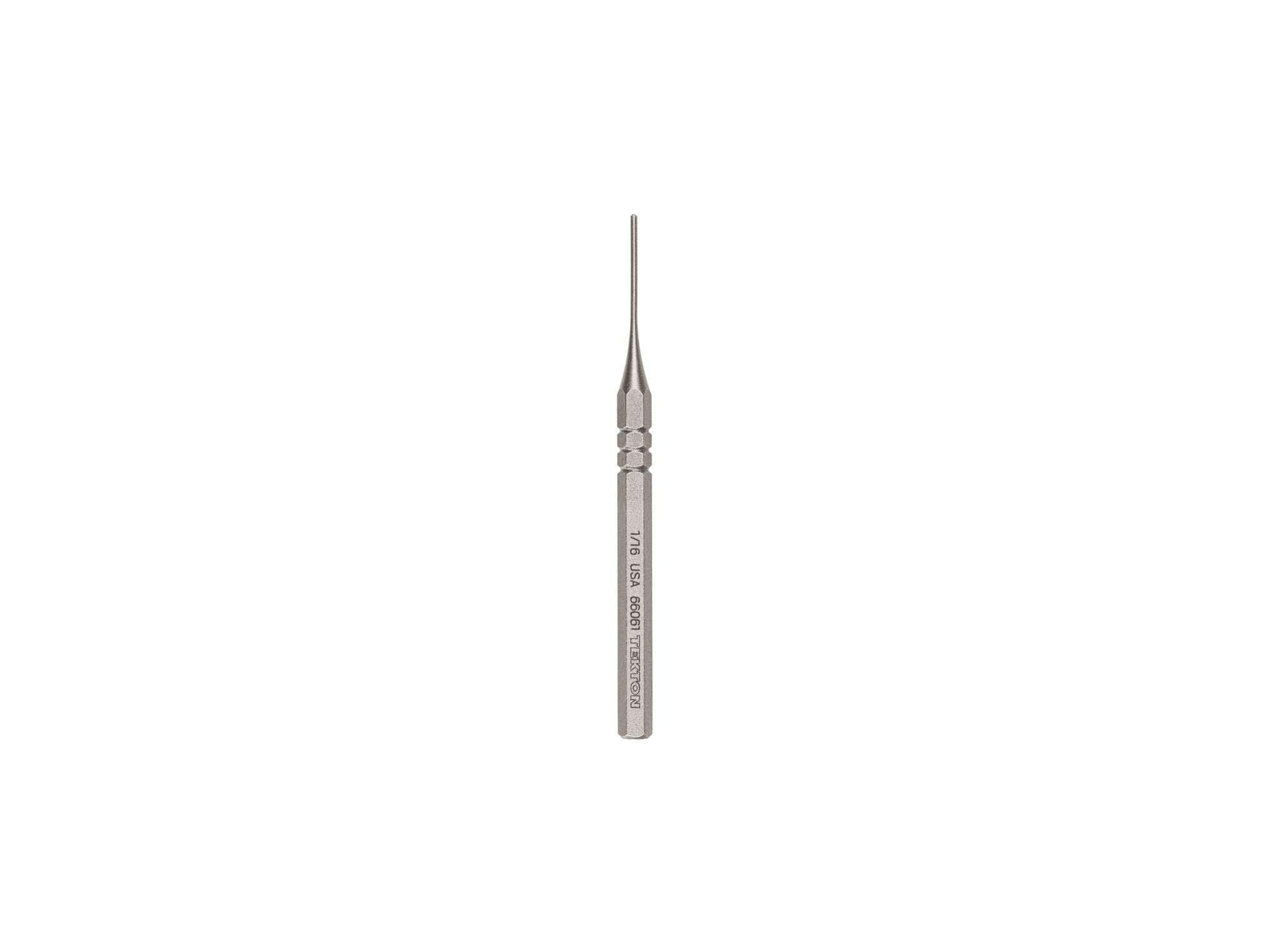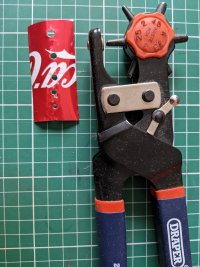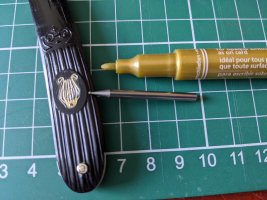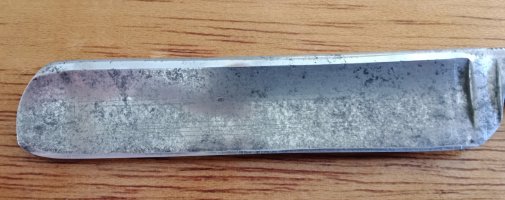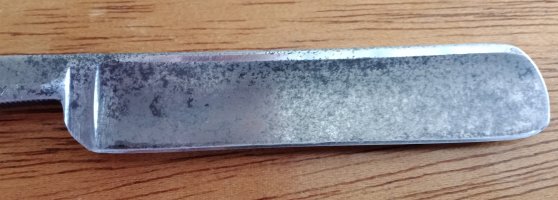rbscebu
Girls call me Makaluod
Yesterday I received my first Puma SR. This was purchased form a coin dealer for a song (about USD 10) with the intention of renovating it back to a useful shaver.
Here are some pictures of the 1⅝ Puma as received.
The scales at the pivot end on the face side have two numbers marked; 887 below the pivot pin and above the pivot pin towards the tail is 008 (or it could be 800 if it is the other way around). It is not that clear in the following picture.
The edge is just a little unhappy with a frown of about 0.5mm. This I can easily hone out when I get to that stage of the restoration.
This will be my first "major" restoration. I will record the progress and ask for guidance in this thread.
Here are some pictures of the 1⅝ Puma as received.
There is ever-so faint etching on the face. I will try and read it as I clean the face up but it will probably be lost during the restoration.The scales at the pivot end on the face side have two numbers marked; 887 below the pivot pin and above the pivot pin towards the tail is 008 (or it could be 800 if it is the other way around). It is not that clear in the following picture.
The edge is just a little unhappy with a frown of about 0.5mm. This I can easily hone out when I get to that stage of the restoration.
This will be my first "major" restoration. I will record the progress and ask for guidance in this thread.
Last edited:
